Nowhere else are the Alps so near, so spectacular, so safe, and so accessible as they are in the Jungfrau Region of the Bernese Oberland. There are literally hundreds of possible destinations and thousands of hiking trails but I only had two days, so I chose the two that I’d heard the most about and that everyone, to a person, said were “must sees.”
On day one I caught the train from the Interlaken Ost station, bound for the Lauterbrunnen Valley. At 796 meters elevation Lauterbrunnen is the departure point for some of the most amazing mountain railways in Europe, but Lauterbrunnen itself is no slouch. Almost immediately upon stepping off the train one comes face to face with the awe-inspiring, 300-meter high Staubbach Waterfall, located literally at the southern end of Main Street.
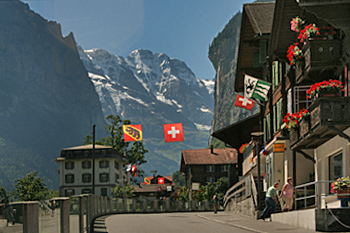
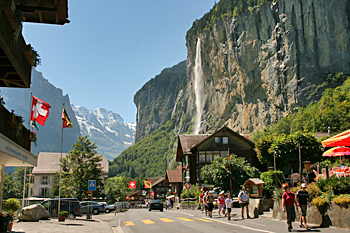

At the end of the town proper, the path continued into the countryside. With every step the view changed – to the right was the cascade tumbling down the sheer rock face; to the left was the lush green valley, framed by craggy mountains peaks. Eventually the path branched to the right, leading to the foot of Staubbach Falls. Up, up, I climbed, on a steep gravel path, until I came to a tunnel that had been burrowed into the mountain. At the end of the tunnel metal stairs led further up, ending at a rocky observation platform that had been carved into the face of the mountain. Water cascaded down in sheets in front of the rock window and a sound like thunder echoed to my right. I stuck my head out over the railing as far as I could and saw the main body of the falls cascading down in torrents off the face of the mountain.
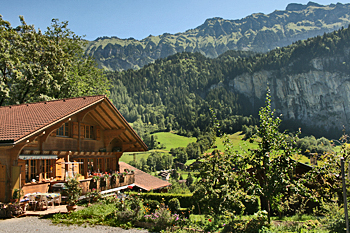

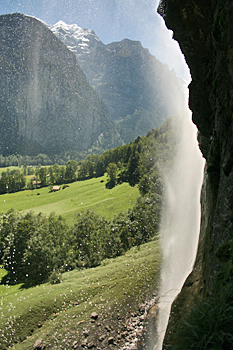
Instead of returning to town at this point, I continued along the hiking path, destined for the Trummelbach Waterfall. Along the way I passed dozens of smaller falls and walked through flower-strewn meadows at the base of sheer mountains. Crossing over the rapids of a pasty gray river, I arrived at Trummelbach. Nicknamed “the falls inside the mountain,” Trummelbach is a glacial waterfall that is literally enclosed within a mountain. With viewing made possible by an elevator built inside the mountain, a number of tunnels carved into the solid rock, and a series of spotlights, the chutes of the Trummelbach Waterfall are accessible at ten points along its route as it carves its way through the mountain.
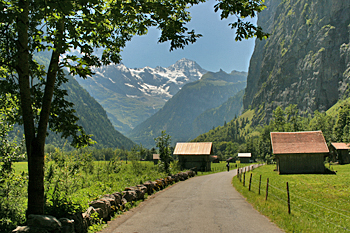
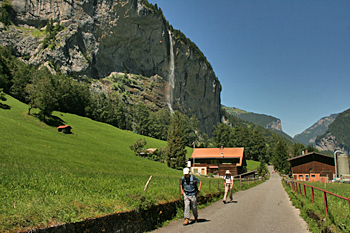
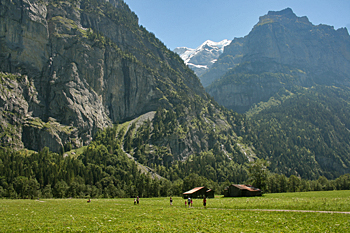
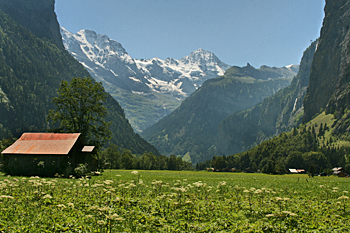
I have always wondered about underground rivers and lakes – I have a hard time imagining how a body of water can exist totally underground. Trummelbach has given me new insight into the process. The Trummelbach alone drains the mighty glacial melt of the Eiger, Monk, and Jungfrau glaciers. It carries 20,200 tons of boulder detritus per year and up to 20,000 liters of water per second. I took the stairway to the two lowest chutes, the ones that emerge from the mountain just before barreling into the river. I rounded the final corner into a roar of white sound, a blast of ice cold air, and a wind so strong I had to hold on to the side of the rock wall. I was amazed that the entire mountain had not been carried away by this enormous power, but it does explain the gray color of the river water that emanates from the glaciers. The elevator then took me up inside the mountain, where I viewed the remaining eight chutes. Some of them poured out of holes in the rock, others swirled down corkscrew slides, still others were roiling pots of water. By the time I had seen all ten chutes my fingers were so frozen I could barely work the camera and I was happy to come back out into the sunshine.

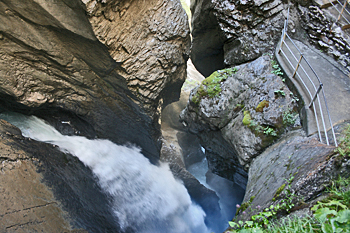
By now it was getting late in the day, so I took the bus further up the valley to the town of Stechelberg, where I caught the cable car to the top of the mountain and the car-free town of Gimmelwald. This is no tourist town – this is a functioning mountain village, complete with cows, sheep, barns, and lean-tos filled to the roof with split firewood. People obviously live here year round, as I passed numerous farmers cutting hay and this happy fellow carrying his rake over one shoulder.

The beauty of this village was stunning – what must it be like to live with these view from your front window:
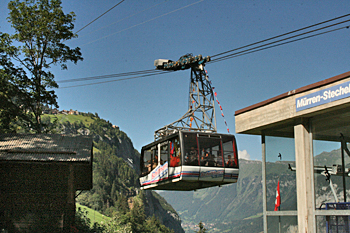

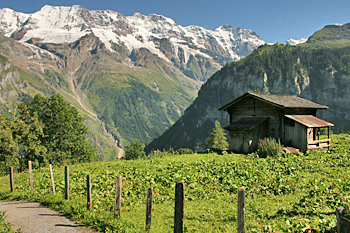
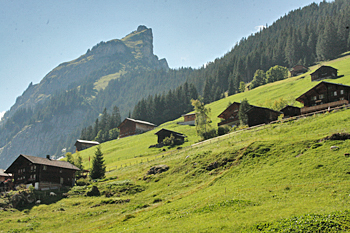
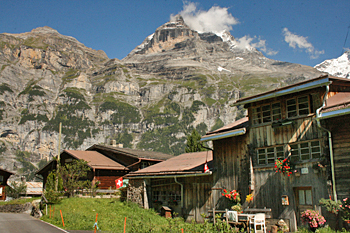
I walked up and out of Gimmelwald, headed for the next village up the mountain, Murren, but the sun started to go down before I reached it and I was forced to turn back because it was getting chilly. I was thoroughly but pleasantly exhausted by the time I got back to Interlaken and immediately fell into bed so I would be ready for the next day’s foray into the Alps.
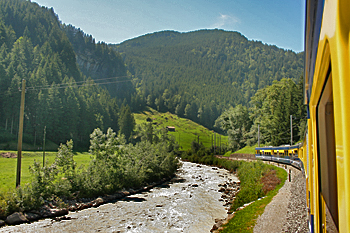
The next morning I got back on the train and again traveled to Lauterbrunnen, this time taking the branch going to the east valley and the mountain town of Grindelwald. Our little train chugged its way up the steep mountain, following the path of a dirty gray glacial stream. Fifty minutes later I stepped off the train to this view:
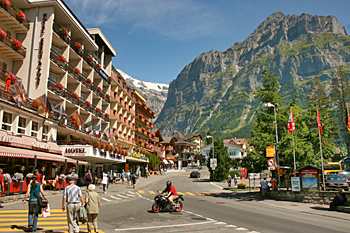
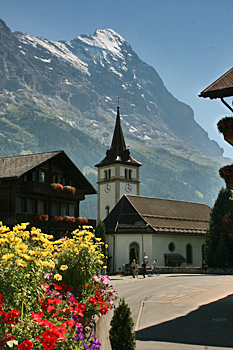
Undoubtedly this town is gorgeous – a set designer couldn’t have done a better job of creating a perfect mountain town. For my taste, however, it was a bit too perfect. Filled with crowds of vacationers in designer clothes, shopping for all they were worth, Grindewald fast became a place I wanted to leave. Again I walked up and out of town, passing the local church, with its spectacular backdrop and perfectly manicured cemetery – I wondered briefly what it would be like to have this view for eternity and even thought I might reconsider my wish to be cremated if I could be buried in a place like this – until I thought about how cold it must get in the winter.
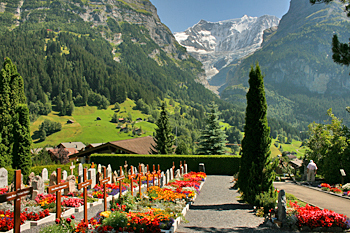
For about an hour I climbed up, up, and up – until I finally got tired and retraced my steps to the train. Since I’m leaving tomorrow for historic Venice, Italy I wanted to get back to the hotel early and get a good night’s sleep. There is so much more of Switzerland I did not get to see, but it is time to move on. As I am fond of saying, so many places; so little time.
